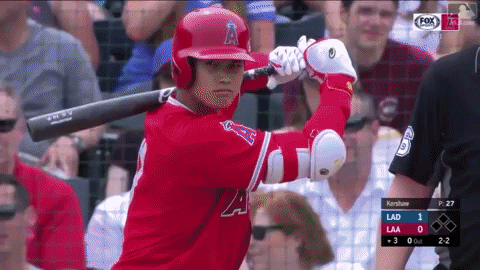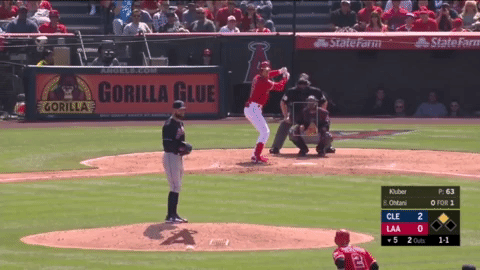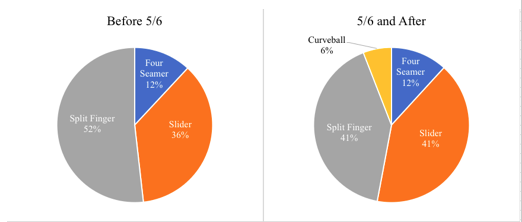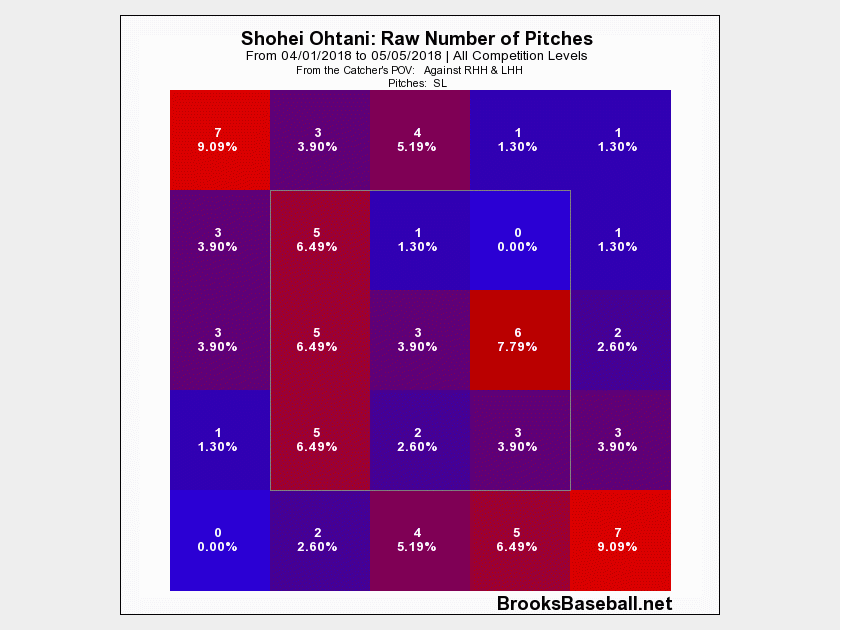Author: Peter Lim (Weinberg ’21)
Shohei Ohtani (23, Los Angeles Angels) is definitely one of the biggest stories of the MLB thus far in 2018. Every time he is on the mound, he is featured on the headlines of major sports media outlets such as MLB.com, ESPN, and CBS Sports. So why is it that Ohtani garners so much interest from major league fans?
The first reason is definitely his ability to both pitch and bat. Ohtani is currently 3-1 with a 3.58 ERA, along with a .321 batting average, 6 home runs, and 17 RBIs. Being successful in both pitching and batting at the major league level is something of a fantasy story. That’s why every time he inks his name in the record books, he draws comparisons to the legend Babe Ruth.
However, playing both as a pitcher and a batter could be a double-edged sword in terms of popularity. When Ohtani was struggling in spring training, media outlets from Japan and the US rushed to downgrade his capabilities. At the time, scouts claimed that his batting was only at the high school level. Even Japanese fans were dissatisfied with his performances.
The reasons behind such polarizing evaluations is not hard to guess. Attempting to both pitch and bat at the highest level could be seen as arrogant, and some fans are not happy with this attempt. Of course, if he successfully does both, he will be praised and welcomed, but if he struggles at one or the other, there is no way but for people to tell him to give up on one of them.
That is why Ohtani’s popularity is not so simply explained just by his ability to both pitch and bat. The real secret behind Ohtani’s success and the continuous support from his fans is that he is a very modest player, always looking to improve himself day by day.
It is not to say that Ohtani is a developing player just because he is only 23 years old. Most players coming over to the MLB from the NPB were already fully mechanically developed; some examples are Hideo Nomo, Ichiro Suzuki, and Yu Darvish. Of course, they also adjusted to major league competition, but they did it largely on tweaking how they used their already-developed abilities.
But Ohtani is different. Not only is his professional career relatively short, but he also split time as pitcher and batter, so he certainly has less experience in both aspects. Instead, he is quick to adopt something new he learned from the MLB to his own arsenal. The most noticeable adjustment he made was adjusting his batting stance. From his NPB times until spring training, March 22 to be precise, Ohtani used a leg kick in his swing.
Ohtani stopped using the leg kick on March 27, only four days before Opening Day. By doing that, he gave up on some of his power to drive the ball. However, with his toe tap, he can now time the fast MLB pitches more effectively. This is a large part of how the batter Ohtani has been so successful.
On the other hand, pitcher Ohtani went through a turning point that was equally impressive to the adjustment batter Ohtani made. Prior to May 6th, Ohtani’s splitter was used as the payoff pitch for 52% of his strikeouts, while only 36% were his sliders. In his two recent starts, on May 6th and May 13th, Ohtani’s splitter was responsible for 41% of his strikeouts, while his slider was responsible for another 41%. He even struck out a batter with his curveball, something he has never done before in his short major league career. Considering that his strongest pitch is known to be his splitter, this is a very positive sign for Ohtani, as it means that now he has more weapons in his arsenal that batters have to think about.
Ohtani’s splitter is already one of the most devastating pitches in the MLB. According to FanGraphs, Ohtani’s splitter is the second-best pitch in the MLB in terms of pitch value, only trailing Justin Verlander’s changeup (min. 30 IP). It is not hard to guess why. Ohtani’s fastball has an average velocity of 97.1 mph, 3rd out of all pitchers (min. 30 IP). Batters obviously have to take this fastball into account. In such a situation, if batters are thrown an 87.7 mph splitter that is released at a similar location but sharply drops vertically at them, batters simply have no chance.
With this splitter, Ohtani has been performing very consistently except for the one game where he was sat early due to injuries. However, the fact that he was overusing his splitter brought concern to analysts, including Pedro Martinez, because it made Ohtani prone to injuries. However, Ohtani had no other option but to overuse his splitter, because he did not have his slider command early on in the season.
It is well known that the MLB baseballs are more slippery than those of the NPB. Hence, Ohtani struggled to find command of his slider early on in the season. He inevitably had to reduce his slider usage and employ his splitter more often. This was slightly concerning, since Ohtani’s ligaments are not fully developed at his young age, so this increased the risk of injuries.
However, things started to change on the May 6th game. Ohtani’s slider, which was previously all over the place, was almost exclusively located low and away from the right-handed batter. With confidence, Ohtani increased his slider usage and consequently was able to throw less splitters. Nonetheless, he still went 6.1 innings with only 3 hits allowed, 1 earned run, and 11 strikeouts.
As Ohtani’s selection of pitches increased, hitters are now starting to struggle at his fastball and curveball as well. In short, if Ohtani was previously a pitcher relying heavily on one plus-plus pitch, he is now a pitcher who dominates the batters with a wide selection of plus pitches. In the long run, this is certainly a good sign for pitcher Ohtani.
Ohtani is crushing major league competition after realizing that his leg kick was disallowing him from making good contact. Now that he has command of his slider, he does not have to rely on his splitter as much, and also reduced risk of injuries. What is more surprising is that all of this happened in just two months into his rookie season. This tells us how gifted of a player he is. Not only that, but for how talented Ohtani is, his work ethic is at such a high level and he is also very humble.
We can see from his interviews that Ohtani always maintains a modest attitude and a willingness to learn. Personally, I don’t even sense any hypocritical arrogance in his modest attitude. In such a way, fans who previously thought of him as rude (for trying to both pitch and bat in the MLB) are now becoming his fans as well. And even at this very moment, Ohtani is constantly evolving to adjust to the American stage.
Email: GilLim2021@u.northwestern.edu








Be the first to comment on "Shohei Ohtani Continues to Evolve into a Complete Baseball Player. Here’s how he’s doing it."